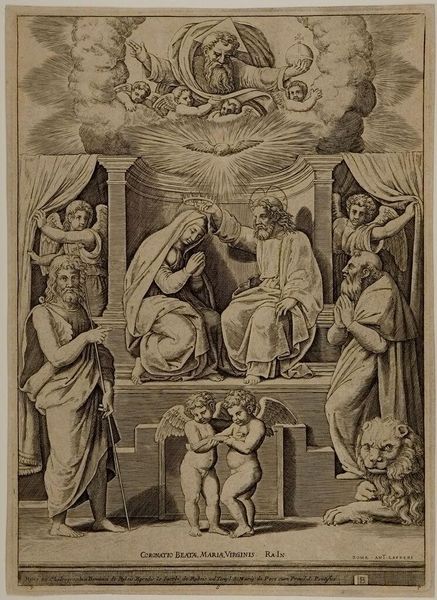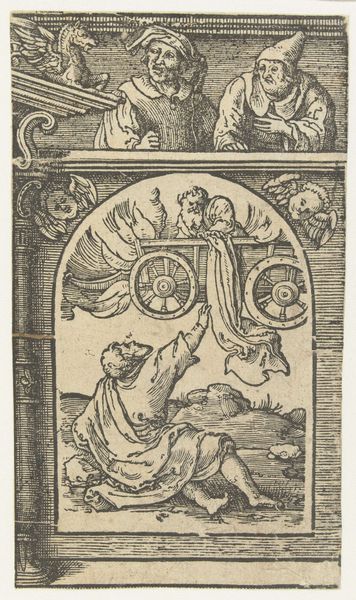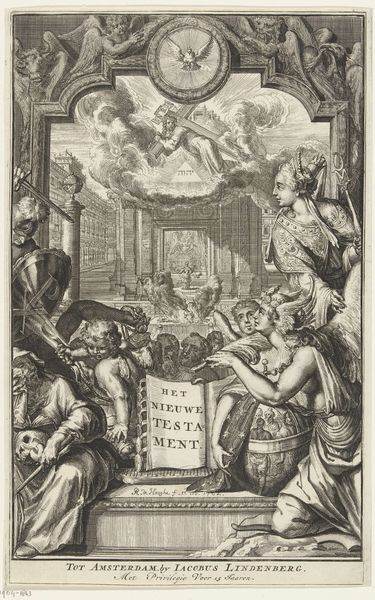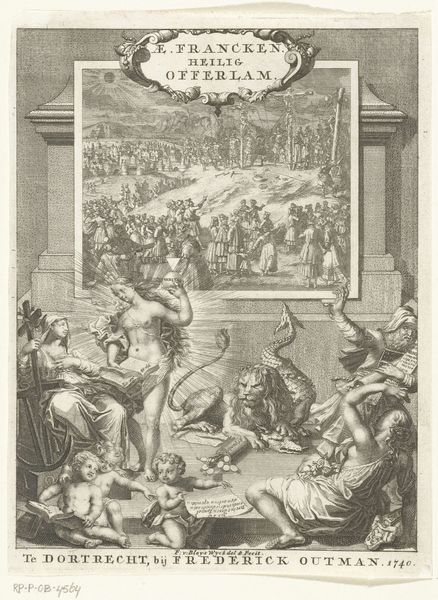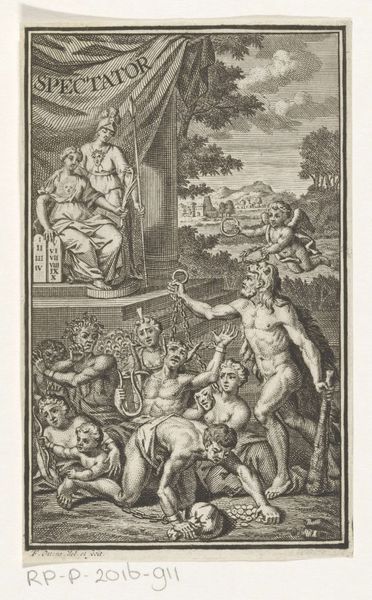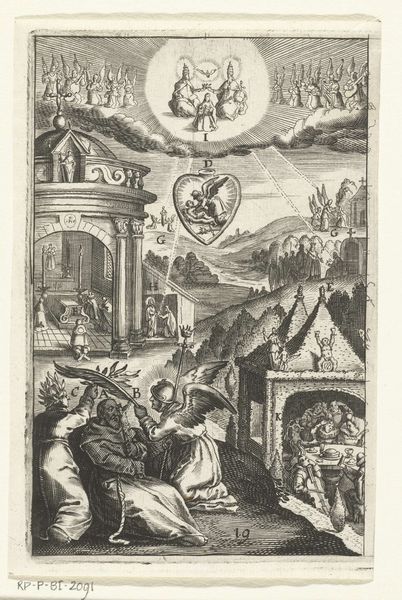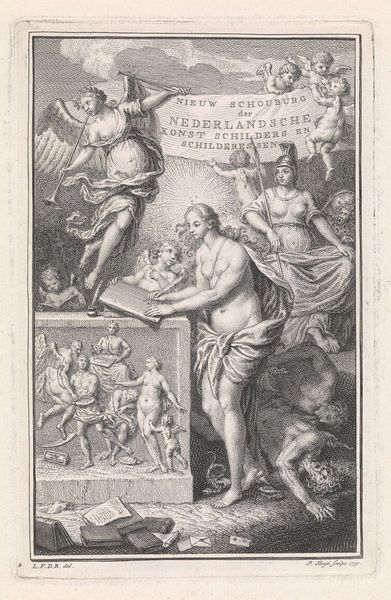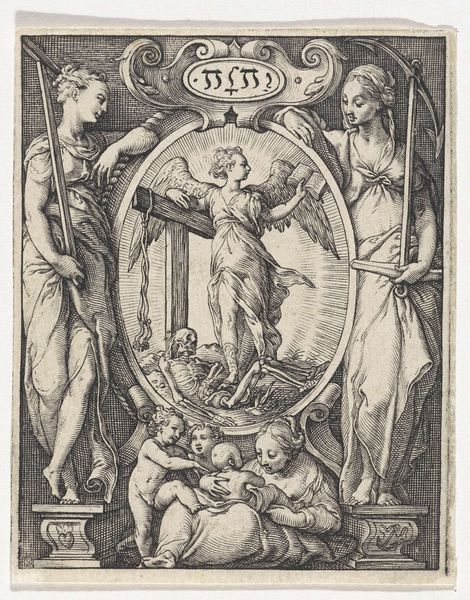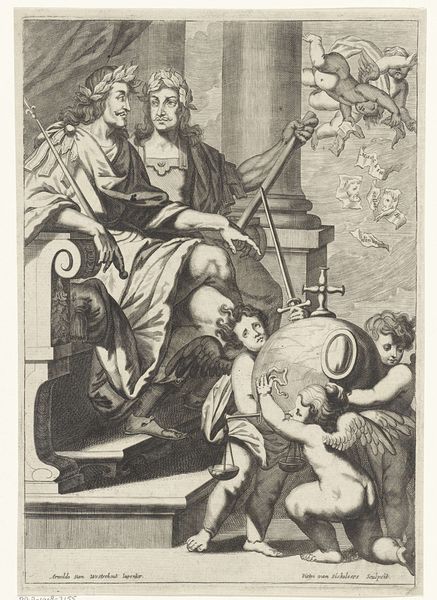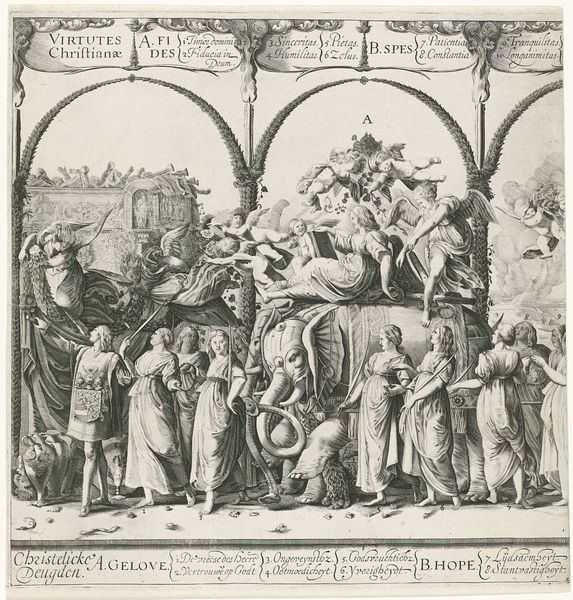
print, engraving
#
baroque
# print
#
pencil sketch
#
old engraving style
#
figuration
#
line
#
history-painting
#
engraving
Dimensions: height 139 mm, width 85 mm
Copyright: Rijks Museum: Open Domain
Editor: This is "Christus' afstamming van koning David", a 1702 engraving by Joseph Mulder, residing at the Rijksmuseum. The detail is incredible; so many figures crammed into the frame! What immediately strikes me is the contrast between the rigid geometry of the architecture at the top and the lively poses of the figures. What stands out to you, and how would you begin to unpack its visual language? Curator: The first thing I notice is the organizing principle: the symmetrical arrangement. The composition, replete with angelic figures, scrolls, and portraits, suggests a carefully structured hierarchy. The stark lines created by the engraving process also accentuate a Baroque linearity. Do you perceive this linearity in the bull positioned centrally? Editor: Absolutely. The bull, oddly enough, seems almost to ground the swirling dynamism around it. But what of the cherubs? Their gestures appear so deliberate. Curator: Indeed. Notice how their gestures work in tandem with the drapery to create diagonals, guiding the viewer's eye across the image. Their precise placement in relation to the central cartouche underscores its significance within the symbolic architecture. Is this level of detailed integration what intrigues you in engravings of this era? Editor: Yes, I find this intense detail quite impressive. The balance of static form and energetic composition fascinates me. Curator: And the way the engraving technique itself contributes to this tension through sharp contrasts of light and shadow is quite extraordinary. What do you make of this from an interpretive stance? Editor: It appears the artist meticulously balances historical weight and visual energy. I'll pay much more attention to structure in similar engravings going forward. Thanks for illuminating this!
Comments
No comments
Be the first to comment and join the conversation on the ultimate creative platform.
